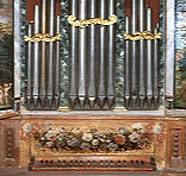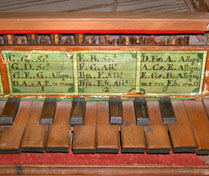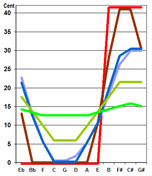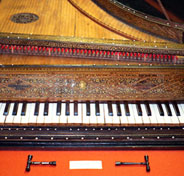Published Book Reviews
David Hitchin in The British Clavichord Society Newsletter, No. 45, Oct. 2009:
“Claudio Di Veroli's work has the advantage (or disadvantage) of being at least twice the size of those by his competitors. In the eleven chapters of the first part Di Veroli introduces musical intervals, the Pythagorean scale, equal temperament, just intonations, meantone, ... lute temperaments, irregular French and irregular 'good' temperaments, comparative evaluations and a review of historic performance. He defines a series of seventeen principles ... They provide a solid framework for understanding and comparing temperaments. The author ... was a student of Sir David Cox, one of the most eminent British statisticians. ...
The second part is about tuning and fretting instructions ... There is advice about hearing and using beats, thirty hints and tricks for harpsichord tuning, transposing instruments ... a list of schemes for keyboard instruments, fretting instructions for lutes and viols, intonation for violins and voices, woodwinds and brass instruments.
The third part ... include[s] multiple divisions ... and an analysis of much of the historic documentation for temperaments.
The book contains some original research. Di Veroli concludes that Barnes' temperament is the optimum one for the Well-Tempered Clavier ... Di Veroli generated and evaluated the nearly 17 million possibilities, and found that very slight improvements were possible, but they were so small, and made tuning so much more difficult, that they were not worth using in preference to Barnes.
... many pages make good use of colour ... Di Veroli ... includes links to audio files, and surely there is nothing more self-evident than the need to hear different temperaments as one reads about them ... There are also two useful spreadsheets. ... This work is only available as ... a .pdf file ... I printed it out. It is formatted for convenient printing on A4 paper, but ... quite legible when reduced to A5 ... a pleasure to read
... the explanations are clear and easy to follow. He has taken on a Herculean task of reviewing and explaining the history and application of unequal temperaments, and while it is unlikely that all experts in the subject will agree with him on all points, he presents convincing arguments and detailed documentation. ...
This is one of the most interesting books that I have read for a long time.”
Bradley Lehman in The Viola da Gamba Society Journal, Vol. 3, Part 2, Dec.2009:
Please click here for details about this most unusual review, as well as a published rebuttal.
Pedro Persone in Early Music America, Spring 2010, Mar.2010:
“Di Veroli's study is divided into three main parts. Part I consists of 'Description, Analysis and History' (11 chapters in total). The seven chapters of Part II explain 'Tuning and Fretting Instructions.' Part III consists of 'Complementary Topics' (four chapters and five appendices). Di Veroli's book is a relevant complementary source to the existing bibliography on the important subject of temperament and can be counted among the best-known books in the field. ...
...it is ... necessary to temper our instruments ... the difference ... is the 'dust' we have to sweep under the rug. Di Veroli provides us with the recipes on how to distribute our 'dust' by using the historical unequal temperaments. He does this by means of symbols, ratios and formulas, and explanations ... The most important temperaments are explained in this book ...
In addition, Di Veroli ... offers important tips about the way to manage tuning hammers or how to change a keyboard temperament shortly before a public performance. The huge number of known temperaments are explained step by step, and fretted clavichords are given a separate chapter. The e-book also offers information about plucked fretted instruments and the intonation of woodwind and brass instruments.
I am very happy to recommend this book, since it will provide pleasant and useful reading for both students and enthusiasts.”



